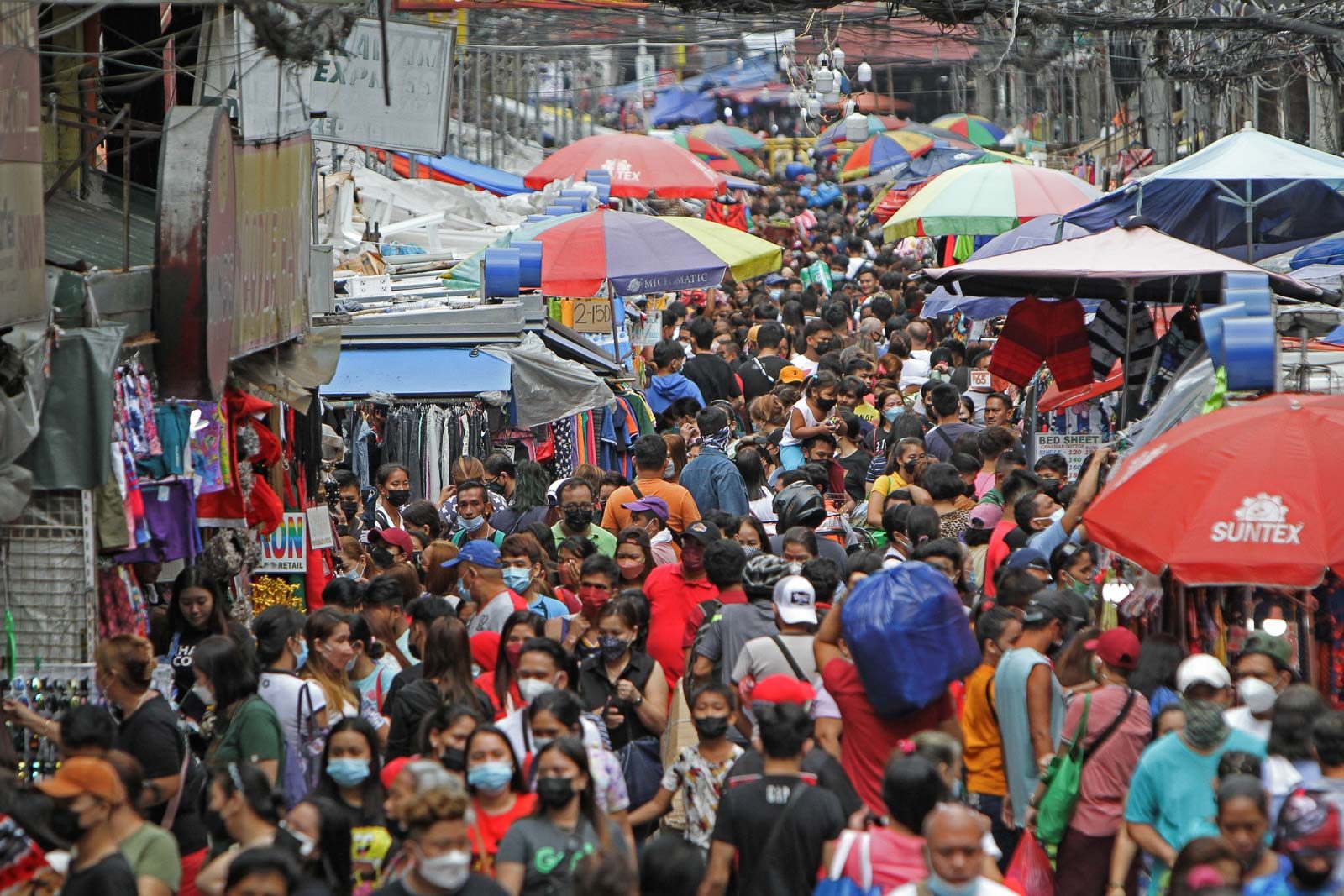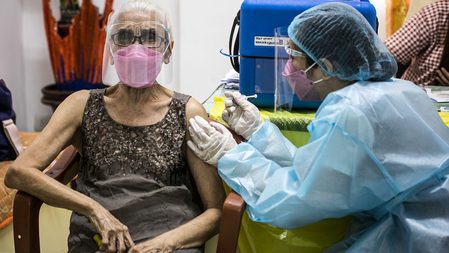SUMMARY
This is AI generated summarization, which may have errors. For context, always refer to the full article.

MANILA, Philippines – There is much talk about how COVID-19 will end as a pandemic. In the Philippines, the word “endemic” has become quite the buzz word in recent weeks. Many have associated the word endemic as the “end” of COVID-19 in society, which implies that our lives are bound to be easier in the years to come.
Endemicity, however, is not as straightforward as mainstream media and some quoted experts would have us believe. There’s more to the word “endemic” than meets the eye, and this has implications on how we will move forward with COVID-19.
Epidemiologists would broadly classify a disease as either in a state of epidemic, pandemic, and endemic. These terms describe the occurrence rate of a disease geographically. An epidemic occurs when there is rapid spread and occurrence of a disease over a particular area. A pandemic occurs when this rapid spread occurs on a global scale. If complete eradication of a disease is not possible, then a disease moves into a state of being endemic.
The Centers for Disease Control and Prevention in the United States defines endemic as “the constant presence and/or usual prevalence of a disease or infectious agent in a population within a geographic area.” Note the words, “constant presence” and “within a geographic area.” An endemic disease is also described as predictable in terms of rate and spread. Some experts would surmise that, given these definitions, COVID-19 remains to be in a pandemic state, as it is not simply located in a geographical area but all around the world. It has yet to reach a steady state of predictability.
Levels of endemicity
Epidemiologists believe we can no longer eradicate COVID-19 completely. Having COVID-19 vaccinations and/or infection does not guarantee life-long immunity. Even the creation of vaccine “bubbles” or a population comprising of fully-vaccinated individuals does not guarantee against breakthrough infections or reinfections. The spread of the Omicron variant ensured that in the beginning of 2022. As such, it is likely that COVID-19 will always be present in the general population.
Once the disease becomes endemic, we can hope to lower the number of new cases of COVID-19 to the barest minimum. This is called elimination – a difficult but not impossible goal if we do the necessary public health work to achieve it. In this ideal endemic scenario, SARS-CoV-2 may continue to exist in the physical environment, but will struggle to cause relevant debilitating diseases to the general population, as exhibited by near-zero symptomatic infections and even severe disease.
In a less than ideal scenario, an endemic COVID-19 entails that we will have to live with the virus through a state of cohabitation. Many of us are hopeful that we can at the very least achieve this level of endemicity and begin the process of economic recovery. Cohabitation would be described as having “sparse reinfections, rare vaccine breakthroughs, and a negligible secondary transmission in the face of the most viral variants.”
However, another potential endemic scenario is conflagration in which SARS-CoV-2 moderately infects and kills members of the population and which can eventually birth other variants with the potential to cause new outbreaks. This scenario wouldn’t be so rosey and is a possibility that we need to account for when we consider COVID-19 as endemic. Clearly, as it is, endemic does not mean harmless.

A brief history of endemic diseases
In the history of the world, there has not been a pandemic quite like COVID-19. Sure, we have likened COVID-19 to the 1918 spanish flu pandemic, but comparing the two has its limits. For one, we didn’t even know viruses existed back then, and the modern vaccination methods we know today had not yet been invented. The 1918 flu virus eventually became endemic around the world, birthing several different pandemics in succeeding decades. This virus turned into the seasonal flu we now know today.
As such, it is not surprising why we think COVID-19 will go the same way as the flu. It should be noted, however, that COVID-19 has currently out-classed the 1918 pandemic in terms of cases and deaths.
Endemicity looks different for various diseases. Other infectious diseases, such as malaria, tend to remain present in areas around the world. Malaria continues to kill in the Philippines; 90% of cases are in Palawan. Tuberculosis infection is also known to be endemic throughout the Philippines. Some would even argue we still have a TB epidemic, but we have considered daily infection rates and deaths as “acceptable” parts of Philippine society.
So is COVID-19 endemic?
Other scientists have suggested to qualify a disease as endemic by examining three aspects of the disease, namely, the rates of COVID-19 cases, deaths, and immunity. According to Dr. John Wong, an epidemiologist from EpiMetrics, the following should be satisfied:
- The levels of cases are low and can be sustained at such a low level.
- The number of deaths are acceptable by society.
- Excellent levels of immunity should be achieved through vaccinations or disease recovery.
Who determines that the criteria above have been met requires deliberation, and that government must play a strong role in that process. Take for example deaths. When do we say that the death rate is acceptable in society? Some countries would look at pre-pandemic influenza (flu virus) death rates as a benchmark. In the Philippines, influenza has been estimated to contribute on average around 5,347 deaths per year. By comparison, COVID-19 killed over 50,000 in just two years.
How the world regards an endemic COVID-19
As of writing, the Philipipines has yet to set clear specific goals in declaring an endemic COVID-19 while different nations around the world have begun approaching COVID-19 as endemic. A major consideration has been to restart economic activity. Levels of vaccinations and falling death rates have also been taken into consideration as a basis for their approach.
Thailand, for example, has already set a criteria for themselves, and it involves having less than 10,000 cases per day, 0.1% case fatality rate for those admitted, and an 80% fully-immunized vaccination rate for those at high risk. Some European nations have even considered surveillance for seasonal flu among its people as a proxy of COVID-19 infection. Looking towards an endemic COVID-19, these countries have begun the work for that transition.
Not necessarily harmless
An endemic COVID-19 by itself is not necessarily a reprieve and it does not mean “harmless.” SARS-CoV-2 variants have been known to emerge independently from one another. Despite causing a milder disease, the Omicron variant infects a whole lot more people. With more infection comes more opportunity to evolve to a more transmissible and deadlier variant of concern. Omicron does not mean the end of viral evolution and its transmission simply ensures the virus’ constant presence in the general population.
COVID-19 as endemic means that we are in it for the long haul, and that it will be part of our lives for years to come. The Philippines will have to make some serious public health reforms, if we hope to safely “live with” the virus. These reforms should enable our health systems to be more “resilient, adaptive, and responsive” despite the uncertainty of an endemic COVID-19.
There is also a need to rebuild trust in our public health institution. When it comes to COVID-19, we need to go beyond the idea that we just have to “live with it” as if we have to bear down and brace. We have to do the work, so that we can live not just to survive but to eventually thrive as a society. We cannot let this virus be in control. A strong strategy is in order. – Rappler.com
Carlo Emmanuel Yao, MD, MBA, is a researcher and team leader at EpiMetrics.
EpiMetrics Inc. is a public health research institution focused on the achievement of health equity through rigorous and creative conception, execution, translation, and communication of health systems and policy research.
Add a comment
How does this make you feel?

There are no comments yet. Add your comment to start the conversation.